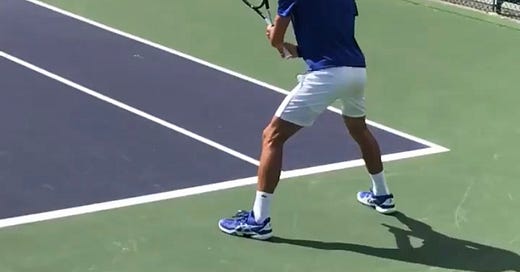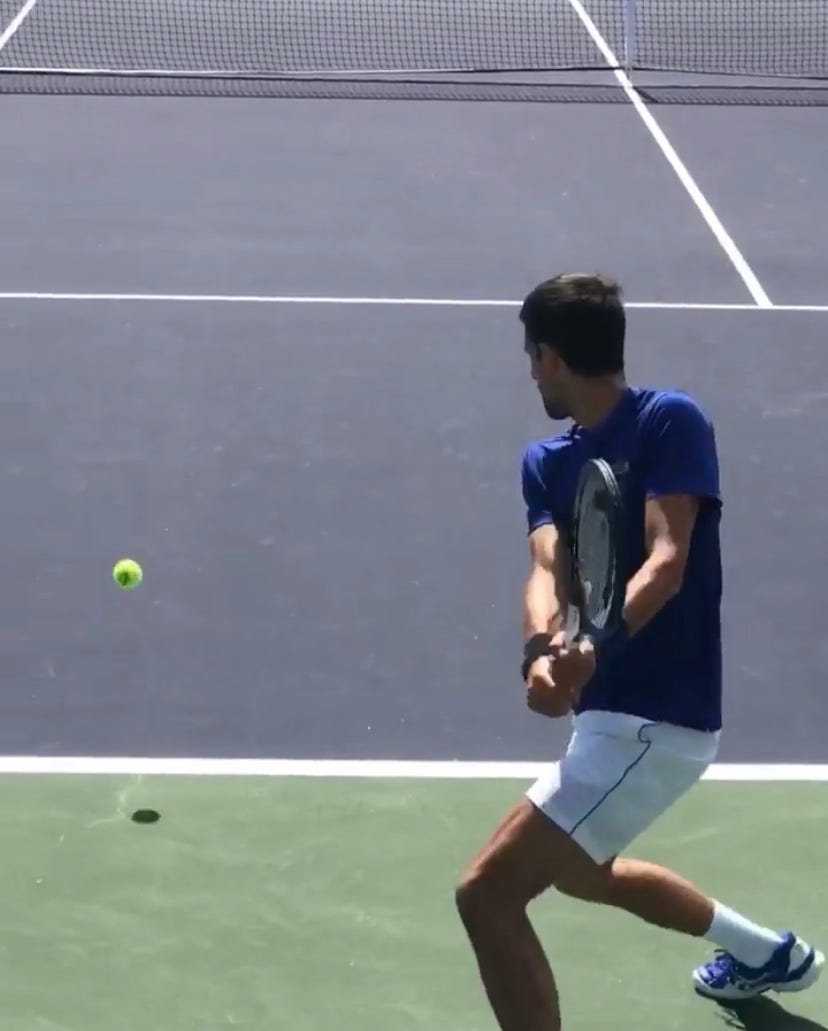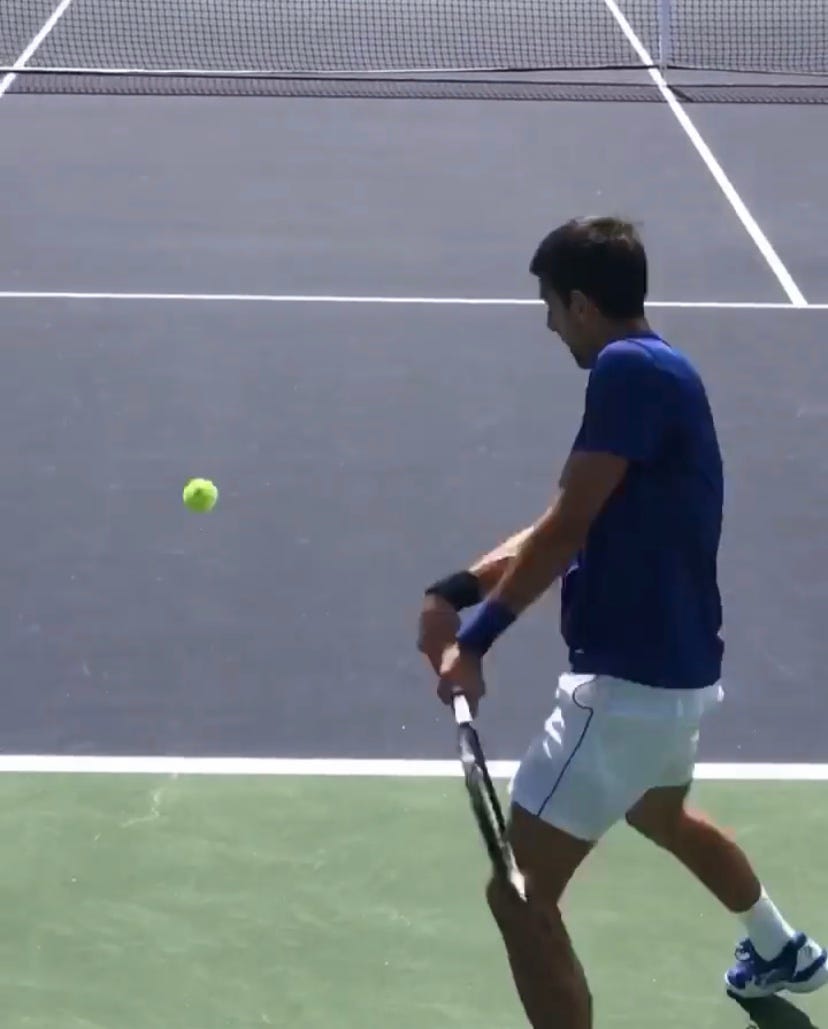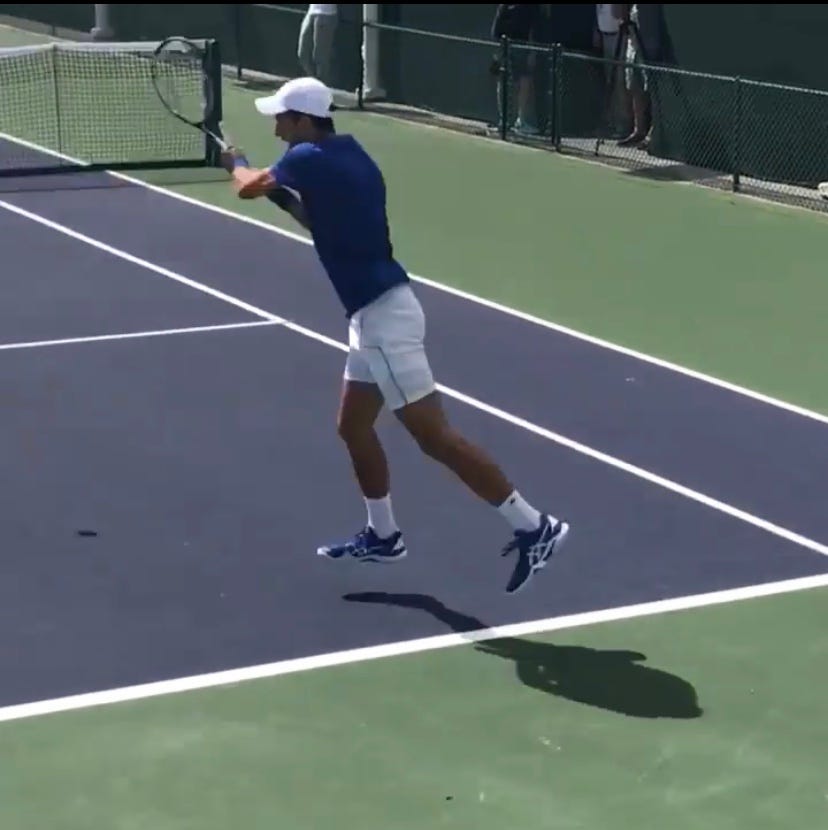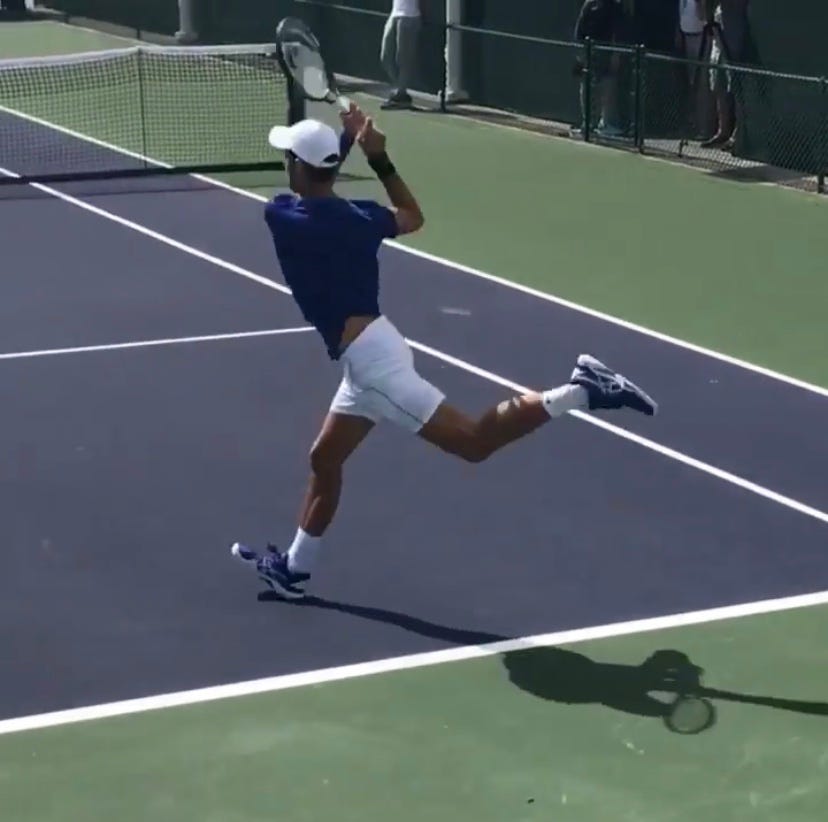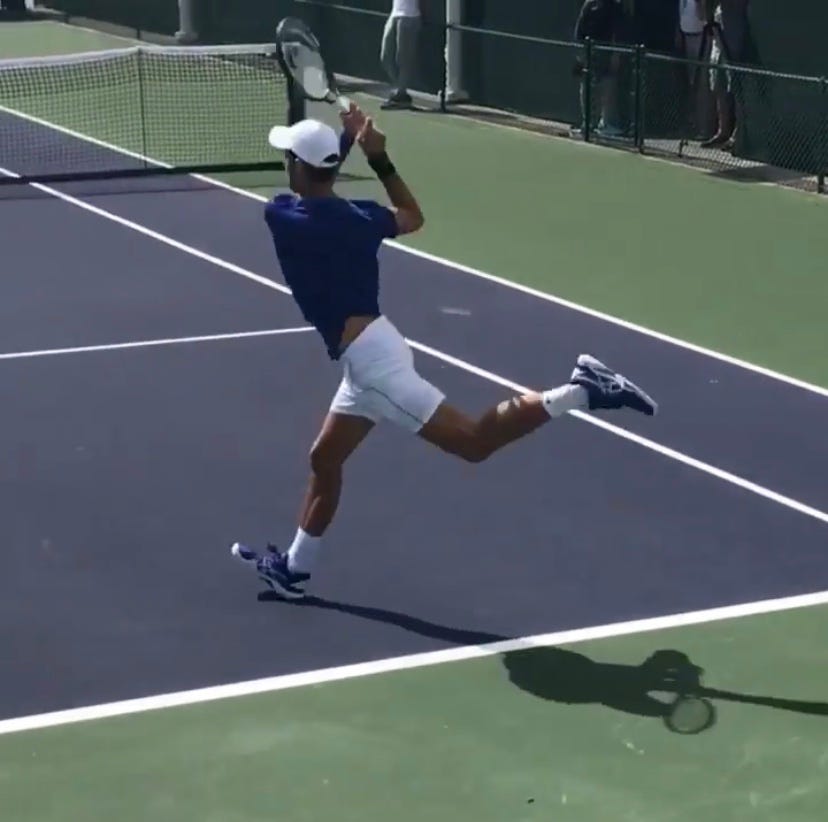Big 3 Newsletter #3: Novak Djokovic's Backhand Breakdown
In this newsletter, we’ll take a look at Novak Djokovic’s backhand, breaking down the technical intricacies of one of the greatest shots in tennis history.
What makes Djokovic’s backhand so special is that the genius of the shot lies in its simplicity.
When examining any shot, the first component to study is the grip.
Grip
Djokovic utilizes a continental grip on his right hand and an eastern-forehand for his left hand.
Equating these grips with the bevels of the racket, his right hand is on bevel 2 and his left hand is on bevel 3.
His grip system promotes a simplistic backhand swing because it does not significantly close the racket face off at the bottom of the swing, allowing a seamless transition from the bottom of the swing to contact, a key factor for Novak when attempting to play this shot in high pressure situations.
You’ll be able to see Djokovic’s grip in the pictures throughout the rest of the article.
Basic Steps
Ready Position
Feet Shoulder Width Apart (wide, athletic base provides foundational strength as the swing begins from ground up)
Racket Angled at 45 Degrees (prevents line of vision from being obstructed)
Elbows Away from Body (facilitates proper spacing through the shot)
Unit Turn
Body and Racket Turn Together (allows for proper use of the kinetic chain throughout the shot)
Upper Body Coils Past Lower Body (major source of power)
Racket Head Up After Unit Turn
Bottom Part of Swing
Racket Drops Below Level of Ball (crucial element of the swing that is paramount for creating lift and topspin)
Closes Racket Face (strings tilt toward ground)
Knees Bend
Contact
Strings Forward
Body Rotates/Elevates to Contact
Body at a 45 Degree Angle at the Impact Point (does not over-rotate)
Head Fixated at Ball
Extension
Body Continues to Rotate/Elevate
Racket Head Extends Toward Other Side of Court
Follow Through
Body Finishes Rotating/Elevating
Racket Finishes Over Head/Shoulder
Technical Specifics
Reset Swing
Djokovic, like David Nalbandian, integrates what is referred to as a reset swing on his backhand side. He begins his racket in the ready position, lets the racket fall below the height of the ready position and then brings the racket back up to the height of the ready position as the unit turn is completed.
Both Djokovic and Nalbandian are incredibly loose and free flowing.
The reset swing is in contrast to a traditional horizontal, one-plane unit turn that you see from a player such as Kei Nishikori.
Racket on Edge
Once Djokovic completes his unit turn, his racket is on edge, meaning the edge of his racket is visible to anyone standing in front of him. From the side view, his strings are facing the camera.
Establishing this position is crucial, as it allows Djokovic’s racket to free-fall vertically with gravity assisting the drop. Djokovic’s racket drop is as smooth and effortless as it gets.
This is the opposite of the position Federer gets in at the same stage of his backhand, explaining in part why Djokovic has a far easier time handling higher balls than Federer. Federer’s racket face is open. Any player that positions their racket face in an open position in the backswing will prefer lower balls to higher balls because it is harder to close the racket at the bottom of the swing if the racket is open in the backswing.
Inside-Out Motion
Djokovic swings in an inside-out motion on his backhand side. What this means is that as his racket drops below the level of the ball, the racket falls near his body. This allows his racket to travel away from his body as he moves his racket to the hit.
Imagine throwing a ball. If your arm is tight to your body, the ball will be tougher to throw and you will not throw it as fast. When hitting a backhand groundstroke, there should be significant space between your body and the hitting elbows.
The inside-out motion also allows topspin to be more easily struck. Players who swing inside-in, tend to swipe across their body, producing sidespin, rather than topspin. If you’ve ever contacted a ball too close to your body, there is a solid chance you’ve put sidespin on the ball by bring your racket across your body horizontally through the hitting zone.
Left Side of the Letter V
Djokovic implements a unique finish on his backhand. Ryan Reidy of 2minutetennis.net calls Djokovic’s finish the “left side of the letter V finish.” This means when Djokovic finishes over his head, it forms what would be the left side of the letter V if a V was drawn where his racket is.
This extremely vertical follow through that Djokovic implements helps provide him with increased lift and spin on his shots. Even though this follow through occurs after contact, the path to creating this follow through promotes an upward swing that creates ample amounts of height, depth and spin. It’s no coincidence that with this finish Djokovic places his backhand groundstrokes and returns extremely deep in the court.
Simplicity Leads to Options
The simplicity of Djokovic’s backhand cannot be overlooked. He hits every key technical checkpoint without inserting any auxiliary steps. This allows Djokovic to execute high level shots within the following situations:
Return of Serve
Open Stance
Off the Rise
When Djokovic’s opponents attempt to attack with pace, spin, height and depth, Djokovic’s backhand is there to withstand the barrage. For instance, no player handles Rafael Nadal’s cross-court topspin forehand quite like Djokovic does. There is no shot in the game that is more versatile and more equipped to handle anything thrown at it than Djokovic’s backhand. Flat serves, kick serves, sidespin serves, deep balls, low balls, wide balls, heavy topspin balls, fast balls. You name it. Because of how mechanically sound and efficient Djokovic’s backhand is, he is able to execute at a high level from any position on the court off any ball.
Return of Serve Technique
Thank you to @tennisbuilder on Instagram for the videos that were used to produce the images in this video!
